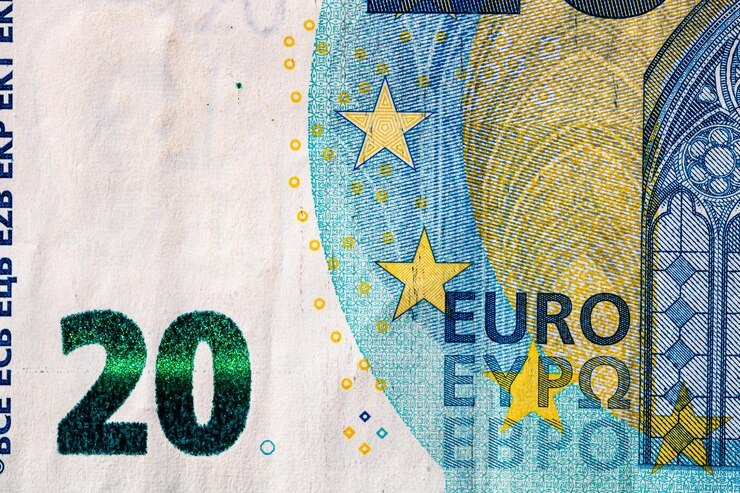Slower Inflation Eases Pressure on UK Bonds: GBP’s Mixed Reaction to CPI Data
UK inflation data for December were larger than expected, slowing more than anticipated with Services CPI coming in at 4.4%, which was much less than the anticipated 4.8%, and core CPI dropped from 3.5% to 3.2%. This slowdown in inflation eases pressure on UK gilts, supporting the expectations for a 25bp rate cut by the Bank of England in February. While the Pound would normally weaken following soft inflation data, it remained basically flat, reflecting a rising sensitivity of the Pound to long-term borrowing costs rather than short-term central bank actions. Even though EUR/GBP was recently in its strongest post-pandemic conditions, it remains the bond market in the UK. Slowing inflation points toward more cuts at the BoE, which can lead to a continued depreciation of the GBP in the coming months. KEY LOOKOUTS • Slowing UK inflation could prompt BoE rate cuts, providing some relief to the struggling gilt market in the coming months. • The Pound remains flat even with soft inflation, indicating increasing sensitivity to long-term borrowing costs over immediate actions at the BoE. • A 25bp rate cut by the Bank of England in February is becoming increasingly likely, and markets are getting accustomed to a dovish view. • EUR/GBP was up, but it is still too early to be positive on a GBP recovery; UK bonds need to rebound. UK inflation in December came in slower than expected, with Services CPI at 4.4% and core CPI falling to 3.2%. This easing inflation is expected to provide relief for the gilt market and supports the likelihood of a 25bp Bank of England rate cut in February. Although the Pound remained flat despite the soft inflation data, it reflects increasing sensitivity to long-term borrowing costs rather than short-term central bank actions, with a bond market recovery crucial to preventing further GBP declines. December’s slowdown in UK inflation is boosting the gilt market and supports expectations of BoE rate cut, while the GBP remains flat amid long-term cost concerns. • December’s inflation was slower than expected, with Services CPI at 4.4% and core CPI at 3.2%. • The slowdown in inflation should ease pressure on UK gilts, thus offering potential relief for the bond market. • The deceleration in inflation further cements the expectation of a 25bp rate cut by the Bank of England in February. • Markets were pricing in a 17bp rate cut ahead of the inflation release, but this print could lead to a more dovish outlook. • Even with soft inflation data, the Pound remained flat, signaling its sensitivity to long-term borrowing costs rather than short-term central bank actions. • The Pound increasingly behaves like a developing market currency, focusing on long-term borrowing costs rather than short-term policy actions. • Despite EUR/GBP rising, it is still too early to call for a reversal in GBP; a rebound in the UK bond market is the only way that can stop GBP from falling any further. UK inflation data published in December recorded a greater-than-expected decline, with Services CPI at 4.4% and core CPI now at 3.2%. This easing inflation is likely to bring some comfort to the gilt market, which has been under severe pressure lately. The inflation print is supportive of the expectation of a 25bp rate cut by the Bank of England in February, and markets are now adjusting to a more dovish outlook. Before the release, markets had priced in a smaller 17bp cut, indicating a shift in expectations after the data. Despite the soft inflation report, the Pound remained flat, showing how sensitive it is to long-term borrowing costs rather than short-term central bank actions. This shows a change in the behavior of the GBP, which now behaves more like an emerging market currency, where long-term economic fundamentals are the focus. While EUR/GBP did gain recently, it is still too early to turn optimistic about a rebound for the GBP. A technical recovery in the UK bond market is essential to prevent further declines in the Pound and thereby stabilize investor sentiment. TECHNICAL ANALYSIS EUR/GBP recently rallied, suggesting a stronger performance by the euro. However, this is more aligned with the strength in the euro rather than a strong rebound in GBP. Technically, EUR/GBP is retesting the important level of 0.8800, and an earlier breakout point from mid-2024. A breakdown here could drive it higher up towards 0.8850-0.8900, or lower toward support at 0.8700, around which the price has found to stay so far in its latest trading period. Failure at the resistance suggests that a sideways correction is probable, ahead of the pair looking at a significant rebound if there are signs that the UK’s bond market bottoming out has finally started to appear. EUR/GBP Daily Price Chart Sources : TradingView, Prepared by ELLYANA FORECAST EUR/GBP is testing a critical resistance point at 0.8800. A prolonged breakout above it would allow room for further moves higher, towards the next level of resistance around 0.8850 or 0.8900. Such a price advance may be supported by a resurgent euro or ongoing GBP sell-off due to economic concerns related to the United Kingdom. In the event that the Eurozone economy remains resilient, or if the European Central Bank (ECB) is considered more hawkish than the Bank of England, EUR/GBP could continue higher, as traders may prefer to hold the euro rather than the pound. EUR/GBP may find support near 0.8700, which has served as a floor for the pair in recent trading. Failure to breakout above 0.8800 may send prices back to support. A resurgence in UK economic data or an even more aggressive BoE might drive the pound higher and sink EUR/GBP. If the euro falls or faces headwinds due to its own economic difficulties in the Eurozone, then EUR/GBP will fall further, potentially breaking below 0.8700 and testing even deeper support near 0.8600.



